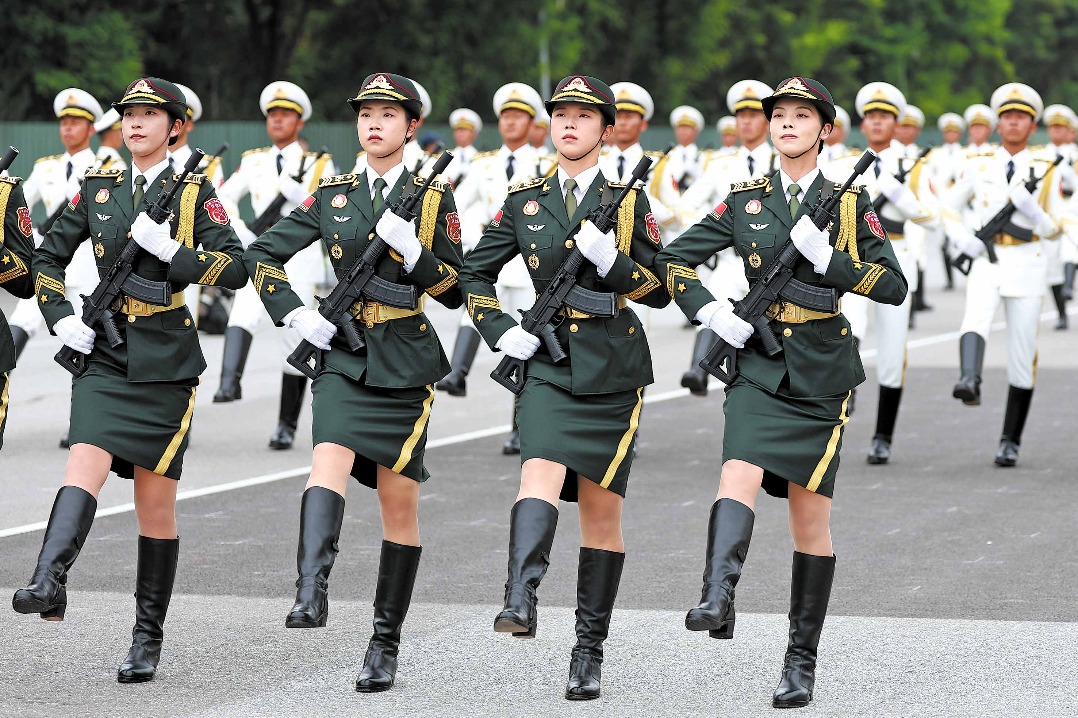Ensuring resource-saving economy during 14th Five-Year Plan period

Based on the key proposals of the 14th Five-Year Plan (2021-25), it is necessary for China to achieve a resource-saving economy in order to implement the new dual-circulation development pattern after the COVID-19 pandemic.
To build such a society, the following four measures would help.
Digital boost
Since the beginning of the COVID-19 epidemic outbreak in late January, many forums, including key economic seminars, have been held online. I have gradually become accustomed to this digital format. The digital format is in line with the inherent requirements of building a resource-saving society and the dual-circulation pattern.
A lot of meetings can be conducted online, which will reduce carbon emissions as well as wastage of resources caused by business trips and gatherings. Recent months have shown the digital format is suitable not only for business and academic occasions but also for daily life.
After the epidemic, fewer people will likely choose to travel, especially by air and high-speed rail. During the National Day "Golden Week" in October, the amount of travel dropped by nearly 30 percent year-on-year.
Instead, online cultural entertainment and social networking are becoming more popular. Behind this are changes in attitudes. Less traffic also means that the air quality this year is particularly good. The relationship between humans and nature may be more harmonious.
Service industry
Economists like to talk about GDP and other big numbers, but let's not talk about big indicators here. One of the most important changes since the epidemic is that the middle-income group has become more rational in consuming overseas.
China and the West differ in terms of consumer mentality. China's service consumption enterprises have become more competitive-from beauty, fashion, and entertainment that are embedded with unique Chinese characteristics, to new online marketing; and from internet celebrities to social media. Through such innovation and creativity, the image and attractiveness of local companies have been enhanced.
For a long time, the overseas consumption of Chinese people, which hit over 2 trillion yuan ($302 billion) in 2019, may gradually shift to domestic consumption, especially to high-quality culture, services and entertainment, as well as in-depth experiences.
China's per capita GDP is expected to reach $14,000 by 2025, which marks the end of the 14th Five-Year Plan period. During this process, the proportion of physical consumption in total consumption will continue to decline, while service consumption will rise.
It will also contribute to the development of a resource-saving economy. In the past, people tended to buy a lot of clothes but would not wear them for long for a variety of reasons.
But now, more and more attention is paid to intelligent supply chains. Real-time orders are based on consumer tastes, and will connect directly to excellent producers in the industry chain, which will eliminate the inefficiencies in the previous cycle of production, remarketing, and inventory elimination.
This kind of intelligent manufacturing is also key to the transformation of China's supply chain in the next stage and the realization of the domestic cycle, which will help a resource-saving economy.
Urbanization 2.0
Urbanization 2.0, which is characterized by the combination of urbanization in metropolitan areas and digital cities, will further play an important role in resource conservation.
For example, the acceleration of "new infrastructure" construction is represented by 5G networks, new medical care, smart grids, and electric vehicle charging piles, instead of heavy investment in traditional public amenities. This will help improve the economic agglomeration effect and relieve the cities' traffic congestion, air pollution and safety concerns.
Smart cities have shown their advantages in controlling the epidemic. Big data functions such as health codes are embedded in various mobile apps, which has promoted epidemic control and consumption recovery.
The larger the city, the more effective, convenient and safe its management would be. This is also conducive to the next stage of the urbanization model of the metropolitan areas, and obviates the need to pay too much attention to the balanced development of the eastern, central, and western regions of China. Small-scale urbanization that is "peppered "everywhere may not be able to effectively allocate resources.
Green, low-carbon economy
This will likely be emphasized in the 14th Five-Year Plan. Within 10 years, carbon emissions will peak, and hit carbon neutrality by 2060.
In the next five years, coal power consumption as a proportion of the primary energy sector's fuels will be reduced.
The carbon trading mechanism will be activated. The performance evaluation of local governments and the evaluation of corporate performance should get more and more attention. Data on carbon emissions and pollutants may be included in the key performance indicators of local governments.
As the Chinese market integrates into the world, foreign investors are increasing their allocations for Chinese assets, and ESG-environmental protection, social responsibility and corporate governance-assessments will become important.
During this process, China's nonfossil energy is expected to rise from only 15 percent of the total energy at present to about 20 percent in 2025. Energy industries such as wind power and photovoltaics continue to develop significantly while new energy vehicles maintain a vigorous development momentum.
After the epidemic, the whole world will likely face sequelae, and deglobalization of trade, defanging of Big Tech, and de-emphasizing of corporate giants could be a trend.
Globally, policies are becoming more and more populist, and economics is becoming more and more mediocre. The external environment and risks China faces are of course completely different from the past few rounds of global economic downturns.
The final result of this process may be increasing populism in developed countries. Policies are easy to formulate but difficult to roll back; productivity is increasingly mediocre; and inflation is returning. This is the external background amid which China will seek to achieve a dual circulation pattern and resource-saving economy.
The dual circulation pattern is mainly aimed at expanding the domestic market, while at the same time persisting with opening-up, in order to retain the industrial chain, promote the continuous upgrading of it, and achieve a resource-saving economy.
Efforts to stabilize most of the production chain in China do not mean closing the door for development, but continuing to open the domestic consumer market to global capital and enterprises.
At the same time, some sensitive and strategic industries are all conducting independent research and development with an aim to substitute import technologies.
The internationalization of the renminbi especially should enter the fast lane, so that the two circulations of the new development pattern can go hand in hand.
That's because the internationalization of the renminbi can enable China to ensure the supply of funds amid the headwinds of aging population and anti-globalization sentiments, and provide financial support for domestic urbanization, technological autonomy, and low-carbon economy, given the uncertainty brought by the Sino-US disputes.
It is necessary to ensure capital inflows amid the need for financing in the international financial system centered on the US dollar. The urgency of the internationalization of the renminbi has increased. The reform and opening-up of the financial industry and the improvement of supervision are needed to attract foreign investment.
The writer is chief economist with the China unit of global investment bank Morgan Stanley.
The views don't necessarily reflect those of China Daily.
Today's Top News
- Book on Confucianism launched in Brussels
- Right track for China-ROK ties lauded
- Nursery rooms help fathers take part in parenting duties with more ease
- Innovation key to cultivation of growth drivers
- Spokeswoman: Separatism doomed to fail
- Recall vote result resounding failure for DPP's political manipulation efforts































